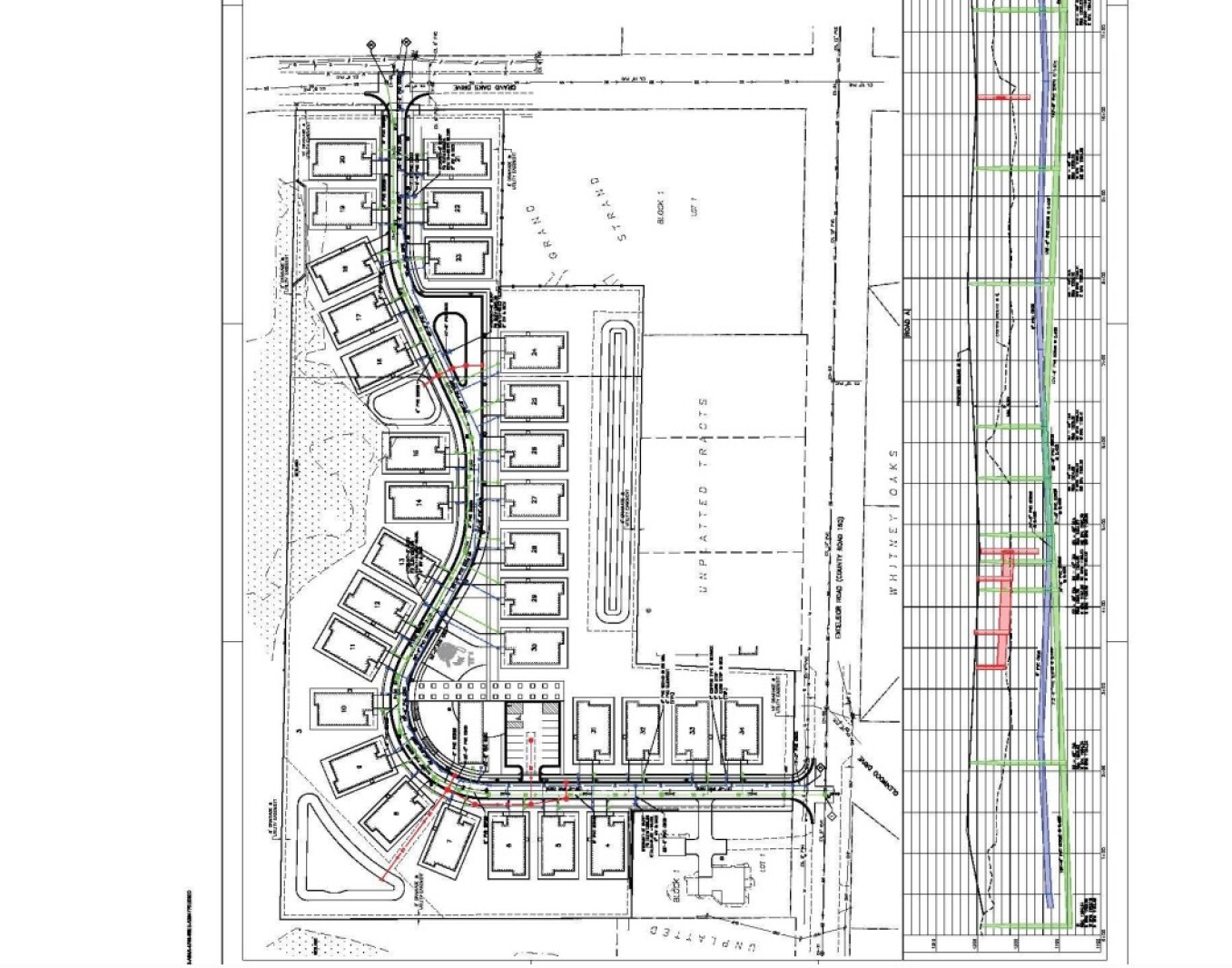Report on Local Development Decisions and Alignment with Sustainable Development Goals
Approval of Liberty Village Residential Project: Advancing Sustainable Community Goals
A residential development agreement for the “Liberty Village” project in Baxter was approved, reflecting a commitment to sustainable urban development and community well-being.
- Project Scope: The development includes 31 single-family housing units, a community clubhouse, and a playground.
- Land Use Transformation: The project involves rezoning vacant property from low and medium density to a planned unit development, promoting greater housing density and efficient use of land.
Alignment with Sustainable Development Goals (SDGs)
- SDG 11: Sustainable Cities and Communities: The project directly addresses several targets within this goal.
- Target 11.1: By creating 31 new housing units, the development contributes to the availability of adequate and safe housing.
- Target 11.3: The approval of a higher-density planned unit development on previously vacant land supports inclusive and sustainable urbanization and enhances capacity for integrated human settlement planning.
- Target 11.7: The inclusion of a clubhouse and playground provides access to safe, inclusive, and accessible green and public spaces for residents.
- SDG 3: Good Health and Well-being: The provision of a playground and community gathering spaces encourages physical activity and social cohesion, which are vital components of community health and well-being.
Denial of Drive-In Theater Proposal: Upholding Community Well-being and Environmental Standards
The Crow Wing County Planning Commission/Board of Adjustment denied an interim use permit for a proposed two-screen drive-in theater in St. Mathias Township, prioritizing community feedback and sustainable land management principles.
- Project Proposal: The “Lakes Area Drive-in Theater” planned to accommodate up to 200 vehicles and operate daily until 2 a.m. during peak season.
- Basis for Denial: The decision was based on significant opposition from local residents and board members, citing incompatibility with the area’s rural residential and agricultural character.
Basis for Denial and SDG Implications
- SDG 11: Sustainable Cities and Communities: The denial underscores the importance of context-appropriate development.
- Target 11.3: The decision reflects a participatory planning process where the concerns of the local community regarding the intensive use of land in a quiet residential area were central to the outcome.
- Target 11.4: The ruling protects the cultural and natural heritage of the rural community by preventing development deemed disruptive to its established character.
- SDG 3: Good Health and Well-being: The community’s concerns and the board’s decision align with protecting public health.
- Target 3.9: By preventing the project, the board addressed potential negative health impacts from substantial noise and light pollution, particularly during late-night hours.
- SDG 16: Peace, Justice and Strong Institutions: The public hearing and subsequent unanimous vote by the commission demonstrate an effective, accountable, and inclusive institutional process at the local level, ensuring that development decisions are responsive to the will of the affected community.
Analysis of Sustainable Development Goals in the Article
1. Which SDGs are addressed or connected to the issues highlighted in the article?
-
SDG 3: Good Health and Well-being
The article touches upon health and well-being through the community’s concerns about the proposed drive-in theater. Residents opposed the project citing “noise and light pollution” and late “hours of operation” until 2 a.m. These factors can negatively impact sleep, mental health, and overall well-being, making this a relevant goal.
-
SDG 8: Decent Work and Economic Growth
The proposal for the “Lakes Area Drive-in Theater” represents a new business venture aimed at local economic development. The applicant stated, “I think it would be good for the community,” implying economic and social benefits. Similarly, the “Liberty Village development” is a construction project that contributes to local economic activity.
-
SDG 11: Sustainable Cities and Communities
This is the most prominent SDG in the article. It addresses issues of housing, urban planning, public spaces, and environmental management. The approval of the “Liberty Village development” with “31 single family units” aims to increase “greater housing density” on vacant land. The inclusion of a “clubhouse and playground” contributes to community spaces. The denial of the drive-in theater based on its unsuitability for a “quiet agricultural and rural residential area” is a direct example of land-use planning and management to create sustainable and harmonious communities.
-
SDG 15: Life on Land
The article connects to this goal through the land-use conflict and potential environmental impact of the drive-in theater. The applicants mentioned that if the project were successful, the plan would be to “log off the trees.” The denial of the permit, therefore, indirectly protects this forested area from deforestation and preserves the local terrestrial ecosystem.
-
SDG 16: Peace, Justice, and Strong Institutions
The article showcases the functioning of local governance and institutions. The decision-making processes of the Baxter city council and the Crow Wing County Planning Commission/Board of Adjustment are central to the story. The process included a public comment period where “About a dozen people… spoke,” demonstrating an inclusive and participatory decision-making process where local institutions responded to citizen concerns.
2. What specific targets under those SDGs can be identified based on the article’s content?
-
Target 11.1: By 2030, ensure access for all to adequate, safe and affordable housing and basic services and upgrade slums.
The approval of the “Liberty Village development” directly addresses this target by creating “31 single family units.” The mayor’s comment that the project fits the city’s goal for “greater housing density” indicates a planned effort to increase the housing supply in Baxter.
-
Target 11.3: By 2030, enhance inclusive and sustainable urbanization and capacity for participatory, integrated and sustainable human settlement planning and management in all countries.
This target is demonstrated by the actions of the Crow Wing County Planning Commission. The commission reviewed the drive-in proposal, held a public hearing, and made a decision based on zoning, community feedback, and the appropriateness of the land use for a “residential and agricultural area.” The city of Baxter also engaged in this process by “amending the zoning map” for the Liberty Village project, showing active settlement planning.
-
Target 11.6: By 2030, reduce the adverse per capita environmental impact of cities, including by paying special attention to air quality and municipal and other waste management.
The denial of the drive-in theater permit was heavily influenced by concerns over its adverse environmental impacts, specifically “noise and light pollution.” The Planning Commission’s decision to prevent these forms of pollution in a residential area is a direct action toward achieving this target.
-
Target 11.7: By 2030, provide universal access to safe, inclusive and accessible, green and public spaces, in particular for women and children, older persons and persons with disabilities.
The Liberty Village development plan includes a “clubhouse and playground,” which directly contributes to the creation of accessible public and recreational spaces for the new community’s residents.
-
Target 15.2: By 2020, promote the implementation of sustainable management of all types of forests, halt deforestation, restore degraded forests and substantially increase afforestation and reforestation globally.
The article implies this target through the drive-in applicant’s plan to “log off the trees” if the venture proved successful. The commission’s denial of the permit prevents this potential deforestation, thereby contributing to the preservation of the local forest ecosystem.
-
Target 16.7: Ensure responsive, inclusive, participatory and representative decision-making at all levels.
The article provides a clear example of this target in action. The Planning Commission held a public comment session where residents “spoke during public comments. All were opposed.” The commission members explicitly referenced these concerns (“noise,” “location”) in their deliberations, and their “unanimous” vote to deny the application shows a direct response to public input.
3. Are there any indicators mentioned or implied in the article that can be used to measure progress towards the identified targets?
-
Implied Indicator for Target 11.1: Number of new housing units planned or approved.
The article provides a specific number: “31 single family units” were approved as part of the Liberty Village development. This is a direct measure of the increase in housing supply.
-
Implied Indicator for Target 11.3: Existence of a functioning local government body for participatory and integrated land-use planning.
The article describes the roles and actions of the “Baxter” city council and the “Crow Wing County Planning Commission/Board of Adjustment.” Their processes of reviewing applications, amending zoning maps, and making decisions based on public input serve as an indicator of capacity for sustainable settlement planning.
-
Implied Indicator for Target 11.6: Number of development projects denied based on environmental concerns.
The “unanimous” denial of the drive-in theater application due to concerns about “noise and light pollution” serves as a data point for this indicator, showing that environmental impacts are being considered and acted upon in local planning.
-
Implied Indicator for Target 16.7: Proportion of the population who believe decision-making is inclusive and responsive.
While not a quantitative measure, the article implies this through its narrative. “About a dozen people” from the community spoke in opposition, and the Planning Commission’s decision directly reflected their concerns. This demonstrates a responsive decision-making process, which is a qualitative indicator of progress toward this target.
4. Table of SDGs, Targets, and Indicators
| SDGs | Targets | Indicators (as identified in the article) |
|---|---|---|
| SDG 11: Sustainable Cities and Communities | 11.1: Ensure access for all to adequate, safe and affordable housing. | Approval of 31 new single-family housing units in the Liberty Village development. |
| SDG 11: Sustainable Cities and Communities | 11.3: Enhance inclusive and sustainable urbanization and settlement planning. | Functioning of the Crow Wing County Planning Commission to review and decide on land-use permits based on public input and zoning. |
| SDG 11: Sustainable Cities and Communities | 11.6: Reduce the adverse per capita environmental impact of cities. | Denial of a commercial project (drive-in theater) due to concerns over noise and light pollution. |
| SDG 11: Sustainable Cities and Communities | 11.7: Provide universal access to safe, inclusive and accessible, green and public spaces. | Inclusion of a clubhouse and playground in the new residential development plan. |
| SDG 15: Life on Land | 15.2: Promote sustainable management of all types of forests, halt deforestation. | Prevention of potential deforestation by denying a permit for a project that planned to “log off the trees.” |
| SDG 16: Peace, Justice, and Strong Institutions | 16.7: Ensure responsive, inclusive, participatory and representative decision-making. | The Planning Commission’s decision-making process included a public comment period and a final vote that reflected the concerns raised by residents. |
Source: brainerddispatch.com







